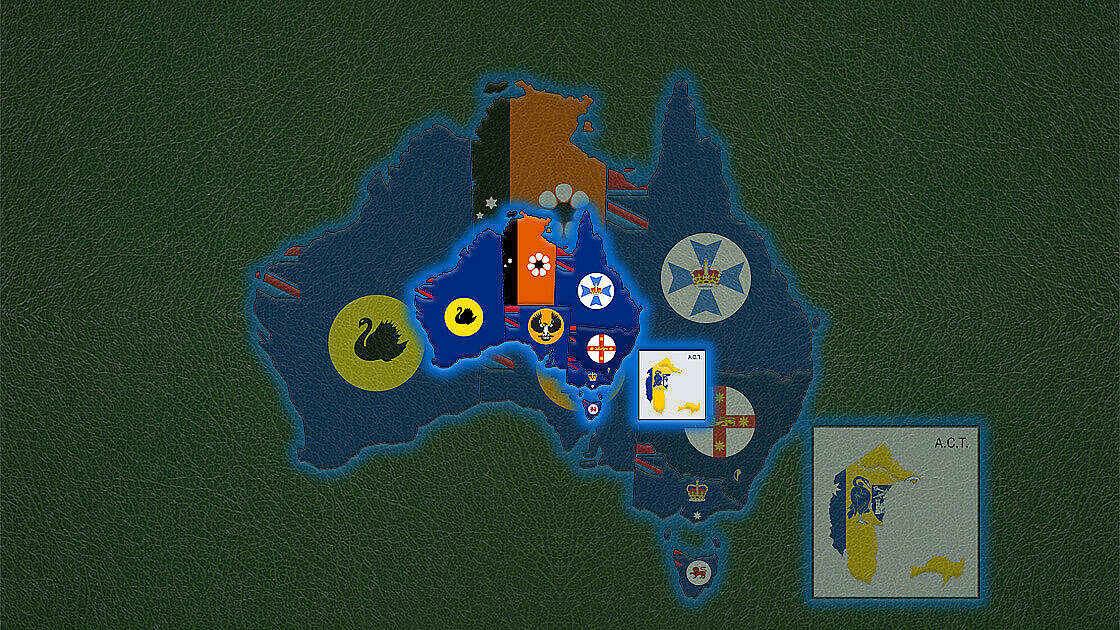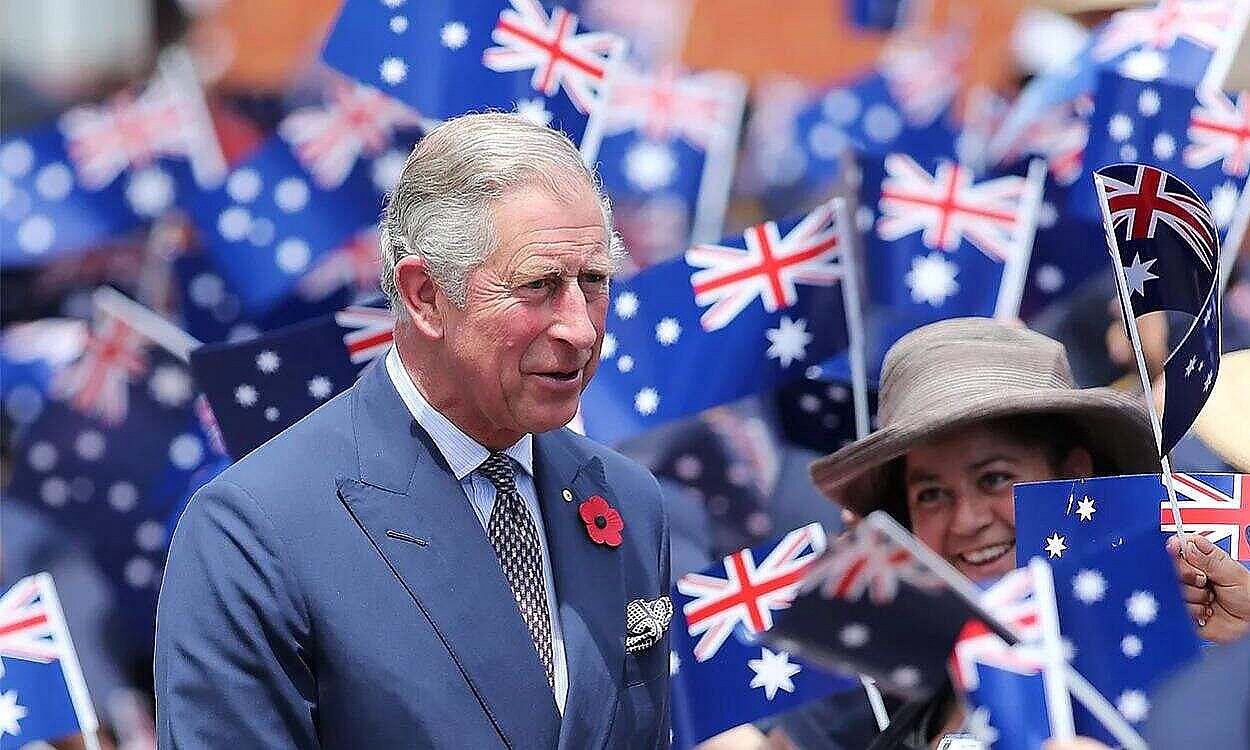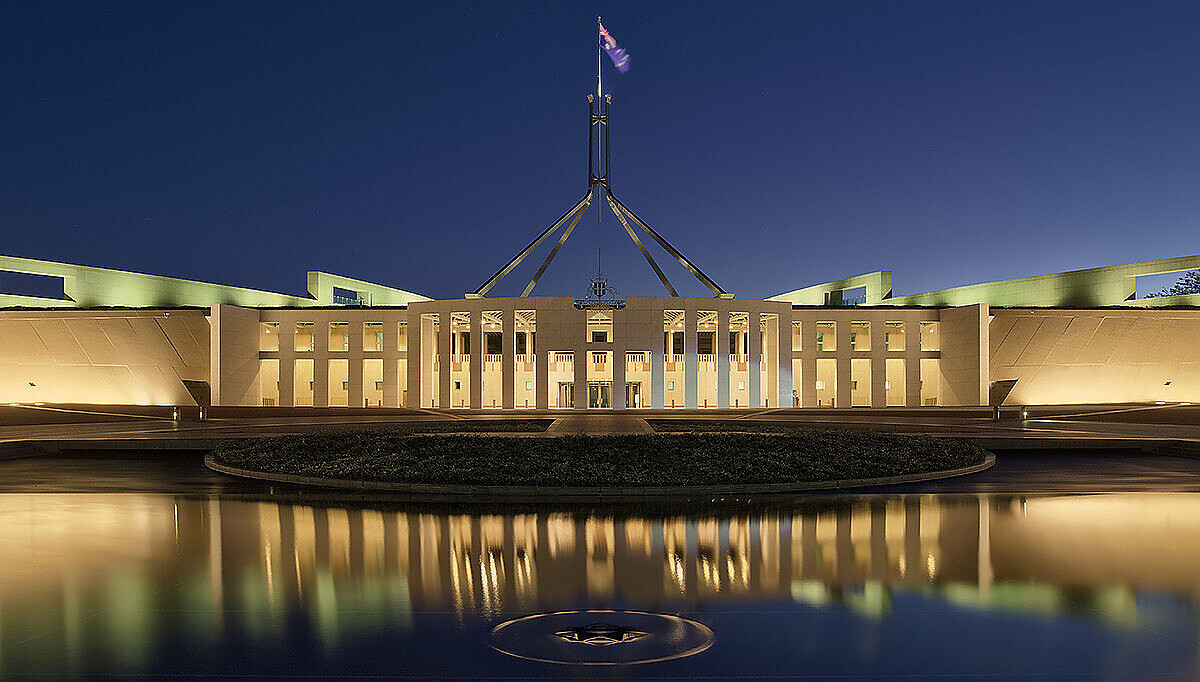As the dominions rose to equality with the United Kingdom and moved from self-government to independence, the impact on the Crown was fundamental and probably not fully appreciated. The Imperial Crown, once indivisible throughout the old Empire, devolved into separate Crowns for each of the Dominions, which became, in modern parlance, the Realms. It is unlikely that any other constitutional system would allow such an evolutionary development. As Professor David E Smith concludes, republics are created; monarchies, particularly the British ones, emerge and evolve through the sharing of power. The move to independence was achieved more under the Crown than by imperial legislation.
Under the Constitution Act 1900 (Imp.), the colonies became the states of the new Commonwealth operating under their pre-existing constitutions. Unlike Canada, the governors of the Australian states are not appointed by the governor-general acting on the advice of the federal government. This is a role the Australian states were never prepared to grant to the federal government, preferring to live with the increasing anomaly of recommendations on such matters being formally made through the British ministers. The states were not even prepared to accept a process whereby the premiers’ recommendations would be conveyed to The Queen through the governor-general. They clearly trusted the British more than the Federal government. It is said the impasse was only broken by The Queen indicating that she would not object to something unprecedented in any Realm –that she would be prepared to receive advice on these matters direct from the Australian state premiers. This process, unique in the Commonwealth of Nations, has now been given effect by the Australia Act,1986 (UK and Aus), which terminated the power of the Imperial or British Parliament to legislate with respect to Australia.
An extraordinary feature of the proposal in 1999 to graft a republic onto the Constitution was that it was seriously proposed that the Commonwealth of Australia should become a republic but that, for the time being, at least, the States would remain constitutional monarchies. This was notwithstanding the fact that the Attorney General, the Hon. Daryl Williams, QC, (and indeed a former Chief Justice, Sir Anthony Mason, who campaigned for an affirmative vote in the referendum) had earlier described this as a “constitutional monstrosity.” Notwithstanding the fact that the Republic Advisory Committee had concluded that the federal and state constitutions could be changed by one referendum, the Committee recommended the piecemeal approach of only grafting a republic onto the Federal Constitution. This was no doubt based on the political calculation that a referendum was more likely to be passed if it did not compel all states to change, rather than on sound constitutional principle.
Strangely, no regard was given to the fact that the Australian Crown is one and indivisible. While the once indivisible imperial Crown had devolved into separate Crowns for each of the Dominions or Realms, there is no evidence that the Australian Crown has divided further into state Crowns. There is nothing akin to the Balfour Declaration or the Statute of Westminster which would give authority for such a further division.
But at the time of the Republican campaign, the constitutional monarchy came to be occasionally described by Republicans under the curious term “heptarchy”. This term is best known from the association of the seven English kingdoms from the fifth to the seventh centuries.
The derivation of this word, heptarchy, should have warned the politicians about the danger of proceeding to dismantle the entity to which they owed some duty of care, that entity presciently declared to be “indissoluble” in the preamble to the Constitution Act. How could this “Federal Commonwealth under the Crown” remain indissoluble if the Crown were to divide, or had divided, into seven Crowns, as the referendum model assumed? Could not the six state Crowns become, if they wished, independent countries, as the old Dominions had? Indeed, at the Constitutional Convention in 1998, the Premier of Western Australia had warned of the danger of secession. And in August 1999, Mr Robert Ellicott QC cautioned that if the republic referendum were passed, “it could split the nation.”
In contrast with their predecessors, the state politicians were unusually trusting of one Commonwealth proposal concerning the 1999 referendum. They ignored and possibly were ignorant of the struggle to ensure that the federal authorities could not turn the governors into federal officers. They ignored and, again, were possibly ignorant of the personal intervention of the Sovereign in achieving this solution. They made no acknowledgement of, and may not have fully appreciated, the continuing role of the Sovereign in ensuring this aspect of the demarcation of state and federal matters.
Under the Australia Acts, the position of the governor in each state is entrenched and can only be changed if all seven parliaments agree. In other words, any one state, as well as the Commonwealth, enjoys a veto over attempts to remove the representative of the Crown in any other state. If the referendum passed, no state could become a republic if any state disagreed. To remove this veto, and at the Commonwealth, all state parliaments rushed through major constitutional legislation with little debate and, one suspects, with little understanding. There was, of course, no urgency for this legislation and no justification for the way in which it was rushed through. It was as if the Republican politicians still assumed that the people would agree to the change. They were wrong, and the bundle of legislation proved to be superfluous.
As a Canadian constitutional authority notes, any transition to a republic would have immense implications for the states. The late former Chief Justice, Sir Harry Gibbs, observed that the legal complexities involved go to the very heart of the Federation. In one view, the changes in the subject of the 1999 referendum would not only have severed the constitutional link between the states and The Queen, but they would also have empowered the Commonwealth to reconstitute the tenure, powers and manner of appointment of the state governors.
Clearly, a transition to a republic would terminate the only Australian institution straddling the Commonwealth and the states, apart from the High Court. The existence of that venerable but relevant institution, the Crown, enables the states, through their direct access to the Sovereign, to ensure their governors can not be reduced to mere federal officers. What, if anything, would have superseded the Crown in this respect under the referendum proposal in 1999 was not made clear, perhaps deliberately so. But at some later stage, this would no doubt have needed to be clarified.




